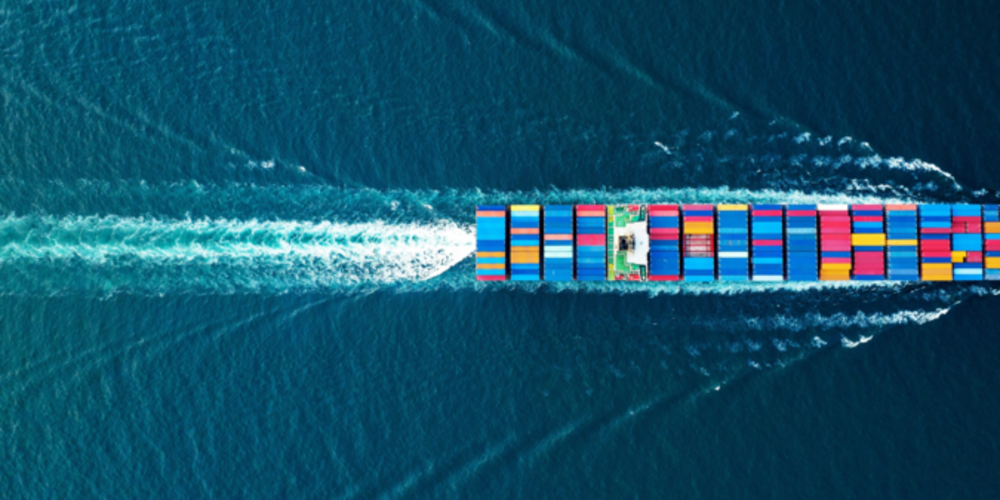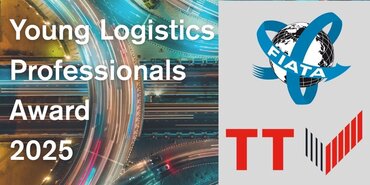TT Talk - Container industry: future direction

For 25 years this newsletter has communicated to the global transport industry information and guidance, highlighting a wide range of topical issues that the industry has faced. Rightly, safety has frequently been the focus of discussion. The industry will inevitably continue to face both existing and as yet unknown challenges.
We gratefully acknowledge the contribution of this article by Morten Engelstoft, a senior Director of TT Club
Having spent 36 years in a variety of prominent roles in the transport industry, and as a Director on the TT Club board, safety is a passion of mine. While I retired from Maersk a year ago, in the most recent years I held overall responsibility for safety, security, resilience and for crisis management at Maersk – and I can say that safety is really very close to my heart. Of course it is important to make money and deliver progress on many different fronts, but at the end of the day there is, in my opinion, nothing as important as keeping colleagues and partners safe from harm so that they can return home from work.
There is… nothing as important as keeping colleagues and partners safe from harm so that they can return home from work
Unfortunately this is not the way it is in many places in the global transport industry and this is a great concern of mine. Where managing safety effectively is concerned, as well as adopting proven strategies, there is great importance in safety innovation.
First of all it is necessary to understand that many of the companies in the industry operate in dangerous environments, where it is essential that safety risks are monitored closely.
It is also important to acknowledge that the main personal safety risks are with our front line colleagues – at the terminals, on the ships, in the warehouses and so on – and yet, at the same time, the ones who have the mandate to change processes, approve investments and so on, are the ones sitting in the offices. This we must connect.
It is therefore essential that all leaders in global transport industry are spending the necessary time to understand the work that is carried out in the front line, to go and see the work frequently, to take time to understand the risks associated with the work, to do safety process confirmation walks – and to participate in sessions with our front line colleagues to determine which actions can be taken to mitigate these risks. This way we can connect the deep knowledge about the work and risks from the experts in our front lines with the decision making, innovation and investments that are necessary to combat these risks.
All efforts to keep colleagues safe will help, but there are a number of aspects or best practices that I think will make the efforts as effective as possible.
Build capacity to fail
First of all it is essential to build the capacity to fail into operations. Of course one should work to identify risks and mitigate them as much as possible, but procedures will not always be followed and things will, for a host of reasons, not always go as planned, accidents will happen. It is in my opinion naïve to think otherwise, so it is critical to think about how we ensure that, when incidents arise, they do not have a fatal or life-changing outcome.
Plan ahead
Secondly, think and plan ahead. A useful illustration in this context is to consider car manufacturers. Certain brands, recognised for the safety of their vehicles, invest millions of dollars in developing their cars with the clear expectation that there will be accidents, their vehicles will be involved in serious collisions. Consequently, they build their cars so that the people driving them will be safe even if there is an accident. There is great importance in thinking ahead, anticipating the potential for accidents and not simply reacting afterwards.
Throughout my career, I have unfortunately travelled to a number of sites shortly after a fatal accident has occurred – it is critical for senior leaders to see in person and learn. In all the cases I have seen, there have been real wake up calls when fatal accidents have happened and everybody has had a lot of ideas how to improve the identified risk. It is good and important to learn from accidents, but it would be so much better if one could reach such insights before the severe accidents happen, not only afterwards.
Todd Conklin, a safety expert from the Los Alamos National Laboratory (an organisation focused on safety research and development) and one of my most important sources of inspiration, powerfully stated that “safety is not the absence of accidents but the presence of defenses”.
Safety is not the absence of accidents but the presence of defenses
Integrated approach
Developing an integrated approach whereby a company identifies the most serious risks and then rallies the entire organisation to combat these risks can be effective. Integrating safety into all of your operations instead of having a small focused team and it being a ‘side of desk’ role for everybody else will build safety ownership. Identify serious risk areas, bring in the experts, attack the risks from all angles and commit to action and progress. Importantly track progress made to ensure that initiatives and improvement measures are followed through to fruition.
Data transparency
When I have read reports from various companies throughout my career, I have been surprised to see the degree of difference there is across the industry, in terms both of the actual severity of incidents from company to company, as well as the quality and transparency of the data. In this context, I hope that greater efforts will be made to improve the quality and transparency of safety data – and also that every company would benchmark themselves to peers in the industry and seek to be inspired by other companies and established best practices.
Pourquoi pas?
Practically, there exist certain barriers for effective safety practices and the implementation of solutions. In part this is because it is not always so simple to identify and protect against all risks.
One of the most important barriers in my opinion is if the tone from the top regarding safety is not genuine or not backed up by action. It is not sufficient to write the correct plans and targets, or make speeches in fine offices, it must be backed up by real interest and presence in the front line, with time commitment, with safety as a clear priority whenever senior executives speak about company progress and results. Such an approach builds credibility and trust, vital components along the journey to the right conversations where the real issues are brought forward.
The company culture can be a barrier as well. The chances of timely intervention on safety in a company that fosters a culture where all employees feel mandated to speak up and stop unsafe work when they see it, is much higher than in a company where the opposite is the case. Doing so can be even more difficult in some parts of the world with more hierarchical norms or in some industries where there can be an almost adversarial relationship between different parts of the company. The challenge then becomes making it crystal clear why it is so important to have every single colleague in a company look out for unsafe work and feel empowered to speak up. Showcasing best practices, recording how many times unsafe work is stopped, recognising and rewarding the right behaviours, are all strategies that assist.
New or insufficiently trained personnel can be a barrier or certainly an area where there is increased risk. As an example it does not help to hand out the required personal protective equipment, if colleagues do not know how to use it – in practice this happens more often than you might think. Or appointing a person to supervise a certain activity, if that person is not themselves trained, rarely delivers the desired outcome. Robust safety work requires expertise, skills, experience, training – in other words it requires that we all take safety seriously.
In my opinion, there is still very far to go for most companies before safety standards are at an acceptable level. However some things have improved over time and innovation to improve safety is one of them, where there is an increasing amount of very good effort ongoing. In an already mature sector of the global economy, innovation could deliver the next big step change where operational safety performance is concerned.
There are, in my experience, too many cases where creativity or innovation is hindered by a company’s atmosphere or bureaucracy. Creativity is best fostered by a good degree of supervisor encouragement, freedom to try things out, backed by organisational and monetary support and recognition. The absence of such attributes can be a barrier for essential creativity and innovation where safety is concerned.
Looking to the future, when innovative ideas materialise, one should consider: who you need to get on-board, how do you test the assumptions made, how do you track progress, how do you use technology or other means to sustain the progress and importantly how do you continuously improve.
As with many people, the maritime industries have provided me with a challenging and exciting career, in collaboration, it is together that we will drive ever improving safety performance
-
If you would like further information, or have any comments, please email us, or take this opportunity to forward to any others who you may feel would be interested.
Documents
TT Talk Edition 300 (Chinese) (0.96 MB) 07/08/2023
- Author
- Mike Yarwood
- Date
- 11/07/2023





